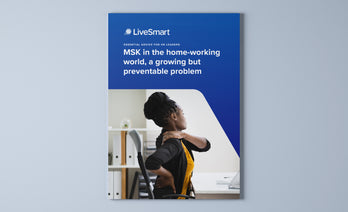Let’s face it, right now we’re all experiencing something strange and unique going on in the world. We’ve all gone through a rainbow of feelings in the past year, and we don’t know what exactly the time frames are for it coming to a close. However, what’s key to highlight here is that we’ve all been going through this together, digitally, and that workplace relationships have become even more important than ever. Which is why positivity in the workplace is key to keeping your staff happy and healthy.
What Are the Characteristics of a Positive Person?
People who carry positivity tend to approach life’s challenges with a positive, determined and productive attitude. They assume the best will happen, instead of the worst.
Positivity is a practice and not something that you are born with. Just like any other skill you might learn, the more you practice positive thinking, the better you become at it. Through practice, eventually your inner voice will move from self-criticism to self acceptance, your mind will become more optimistic about the world around you, and you will be able to deal with day-to-day stresses with a constructive approach. This way of thinking can lead to the many health benefits of positivity.
The Health Benefits of Positivity
Research suggests that positive thinking and optimism have multiple health benefits including:
- Greater life span
- Better stress management
- Improved immunity to illnesses such as the common cold
- Lower rates of depression
- Improved cardiovascular health and lower blood pressure
- Better coping skills
- Improved problem solving
- Greater creativity
- Better physical and mental wellbeing
It is thought that having a positive outlook enables you to cope better with stressful situations, thus reducing stress and the negative impact it can have on your body. Positive thinkers are more likely to have healthy habits such as healthy nutritional habits, exercising regularly, and limited alcohol intake.
Positive Thinking in the Workplace
Positive thinking can not only benefit your health and personal life, but also your professional life too. Adopting a positive attitude at work can:
- Create positive interaction: People gravitate towards positive people. This can help develop positive relationships amongst colleagues and clients. Teamwork and networking becomes easier.
- Reduce stress and increase problem solving and decision making skills: Positivity reduces stress, focuses the mind and allows you to problem solve and think more clearly when making decisions. You’ll also consider the positive outcomes your decisions can bring.
- Increase productivity: Positivity improves energy levels as negative thinking wastes a lot of energy. This can increase the willingness to take on new challenges and seize opportunities
- Creates a positive environment: Positivity is contagious. A positive attitude can inspire colleagues to adopt the same positive thinking attitude
Here are our 5 ways to improve positivity at work:
1. Practice gratitude
Show random acts of kindness and compliment your staff. Try to go further than a simple ‘thank you’, be specific. Look for the good work they have done and share it. Gratitude helps to strengthen relationships, build trust and encourage reciprocal generosity. Praise employees in team meetings or send emails showing appreciation of the work that they have done. This will then encourage them to do the same.
2. Get your staff connecting
Encourage connection and collaboration amongst employees. Employees that like each other will enjoy spending time together at work and will rarely leave a company. They will work collaboratively on projects or tasks, enabling creative problem solving. Encourage teamwork by grouping together employees, and organise social events.
3. Emphasise connection to the greater purpose
Make sure employees feel connected to the bigger picture by constantly letting them know how their work is helping the company reach their goals. Let them know their work is valuable so that they feel a greater sense of purpose.
4. Provide opportunities to learn and develop
Invest in opportunities for employees to grow and develop. Encourage employees to attend formal courses to improve their skills, set up internal or external mentorship programs that can help your staff develop their skills. Learn your employees strengths and make use of these strengths when developing opportunities and delegating projects or tasks.
5. Introduce a wellness programme
It’s a known fact that healthier employees are happier and more productive. Improving employees' approach towards their nutritional habits, physical activity levels and lifestyle can help improve their physical health and mental wellbeing. It not only makes them feel supported and appreciated but it shows that you care, you boost their morale and they are more likely to stay. You can provide lunchtime exercise classes such as yoga, publish regular wellness newsletters on good health, organise walking meetings, and invest in an employee health and wellness programmes.
Further reading: the top 5 signs your staff are struggling with their mental health.
To book a free consultation with LiveSmart and find out more about what health checks we can provide for your staff, please contact us here.
 5 ways to improve positivity at work
5 ways to improve positivity at work

